If you are tired of insects taking over your home and garden, you will likely consider using a pesticide to wipe them out. Still, some insecticides can be toxic and dangerous to use around your home, and that’s why diatomaceous earth is so popular as a wide-spectrum, all-natural bug killer.
How to use diatomaceous earth as a natural pesticide? To use diatomaceous earth as a natural pesticide, sprinkle it on carpets, skin, furniture, your lawn, and any other pest-infested area. It will kill insects such as ants, roaches, beetles, slugs, ticks, fleas, mites, termites, aphids, scorpions, and more, and is safe to use around pets.
This article will explain what diatomaceous earth is and how to use it. It will give you all the details about how it works against pests and what kinds of insects it kills. It will also recommend some of the best diatomaceous earth products for killing bugs indoors and outdoors so that you never have to worry about insects bugging you again.
What Is Diatomaceous Earth?
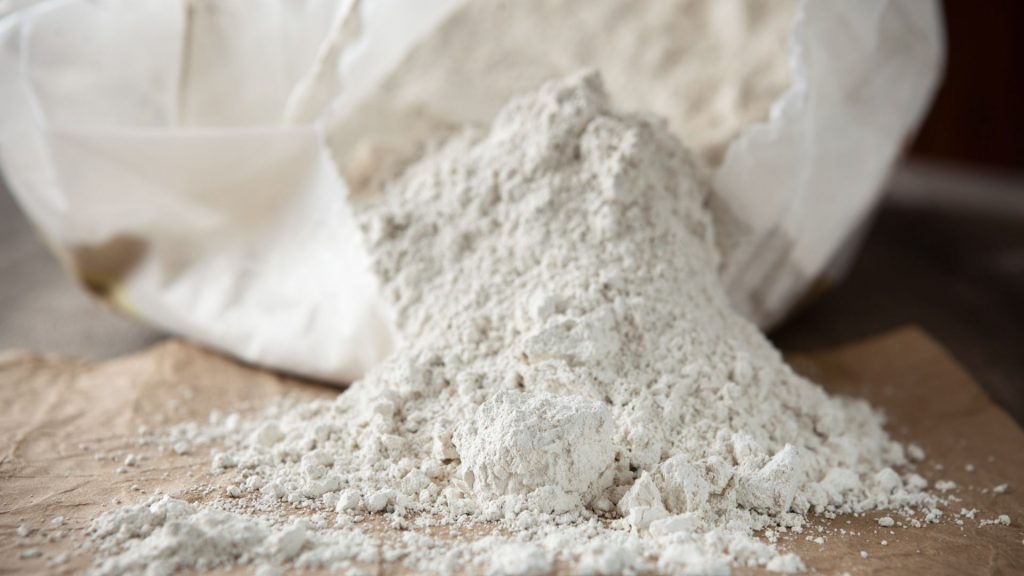
Diatomaceous earth may sound mysterious, but it is a natural substance that is much more common than you would think.
Diatomaceous earth is a naturally occurring silica powder that you can use as an all-purpose pesticide and an ingredient in food and cosmetics.
So, what is diatomaceous earth made of, and how does such a pet-safe, organic powder kill pests so effectively? Let’s talk about it.
What Is Diatomaceous Earth Made Of?
Diatomaceous earth is made up of tiny, fossilized organisms called diatoms. Diatoms are single-celled algae, and they have a cell wall made out of transparent silica, making them look like little glass balls.
Dead diatoms leave behind their silica-rich skins, which heap together and fossilize in a chalky rock-like deposit. This deposit is ground up into a powder to make diatomaceous earth.
Diatomaceous Earth Benefits
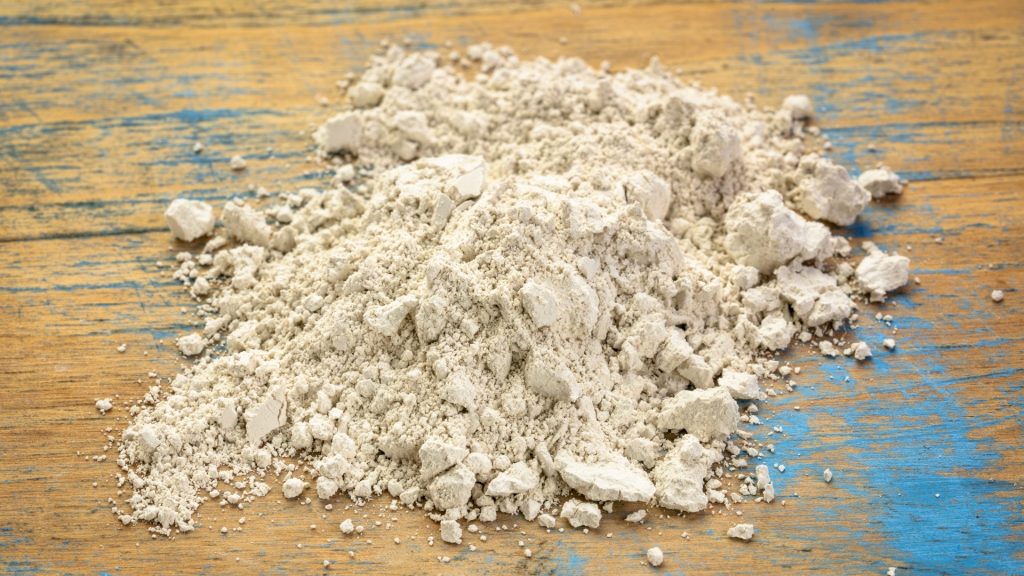
Since diatomaceous earth, which is used as a pesticide, is made of algae, it is chemical-free and safe for use around your house, in your garden, and on your pets. Food-grade diatomaceous earth is even used as a dietary supplement for people, and it’s a common ingredient in toothpaste and vitamins.
So, when human safety is concerned, diatomaceous earth is one of the best pesticides out there.
Diatomaceous earth will not kill birds, squirrels, chipmunks, and other animals. In nature, birds will even bathe themselves in diatomaceous earth to kill mites and other pests that burrow in their feathers. Still, prolonged exposure can irritate an animal’s respiratory system, including humans, so you shouldn’t breathe in the powder.
Diatomaceous earth is also helpful since insects cannot build up a tolerance to it. Many insects gradually evolve to become immune to pesticide chemicals, which reduces their efficiency. Diatomaceous earth, since it uses no poisons to kill insects, will always be practical.
What Is Diatomaceous Earth Used For?
Primarily, diatomaceous earth is used to kill crawling insects. Still, it has many other uses, such as a nutritional supplement, abrasive agent in toothpaste, kitty litter ingredient, and detoxifying film in water filters.
How To Use Diatomaceous Earth As Pesticide?
If you want to control the pest population in your home or yard, diatomaceous earth is one of the best options.
To use diatomaceous earth as a pesticide, sprinkle it on bug-infested areas either indoors or outdoors. You may need to reapply if using this outside, as the wind or rain can wash it away.
Now, let’s go through the steps to use diatomaceous earth in different areas of your home or lawn.
How To Apply Diatomaceous Earth Outdoors

When used outdoors, diatomaceous earth is an excellent way to keep pests off your plants and away from your house. You can apply it to the sides of your home, on edible plants, on the ground around bug-infested trees, or in any other place where insects seem to be colonizing.
To apply diatomaceous earth outdoors:
Step 1: Identify the place where there are the most insects.
Step 2: Wear gloves, goggles, and a mask when handling diatomaceous earth to avoid eye, skin, and respiratory system irritation.
Step 3: Sprinkle dry diatomaceous earth around the room, only depositing a thin film.
Step 4: Reapply after it rains.
How To Use Diatomaceous Earth Indoors?

Diatomaceous earth is one of the best indoor pest control treatments since it is much safer than other pesticides. You can use it on furniture, carpets, around your kitchen, on windowsills, on your mattress, and in any other place in your house. Still, be careful not to get diatomaceous earth in your vents since it can irritate your lungs if you inhale it.
For indoor applications, you should only use food-grade diatomaceous earth as a pesticide.
To apply diatomaceous earth indoors:
Step 1: Wear gloves, a mask, and eye protection when handling diatomaceous earth.
Step 2: Lightly sprinkle or use a shaker bottle to poof your indoor spaces with diatomaceous earth, paying close attention to cracks and crevices behind furniture or kitchen appliances.
Step 3: Leave the area for at least 12 hours, keeping pets and children out of the treated spots.
Step 4: After waiting, vacuum or sweep the treated area to remove excess diatomaceous earth that could be inhaled.
How Often Should You Apply Diatomaceous Earth?
If you use diatomaceous earth outdoors, you should reapply it every time it rains since diatomaceous earth only works when it is dry. You may also need to reapply after intense wind, which can blow away the diatomaceous earth.
For large indoor infestations, you should reapply diatomaceous earth once a week for a month or until you see no insects anymore.
How Does Diatomaceous Earth Work As Pesticide?
Bugs do not have skin. Instead, they have a hard, waxy exoskeleton called a cuticle, prone to damage when they crawl over abrasive substances like silica. The cuticle keeps vital juices like water and blood inside of insects. The rough, tiny crystals in diatomaceous earth slice bugs’ feet and cuticles, often causing internal bleeding.
Diatomaceous earth also absorbs moisture and breaks down oils. That means that, after the silica slices open a bug’s skin, it draws water out of the insect’s body, dehydrating it and killing it.
How Long Does It Take Diatomaceous Earth To Work?
For almost all insects, it will take 12 hours for them to die after they have walked through diatomaceous earth. It will only take around 4 hours for some smaller insects, but for best results, leave the diatomaceous earth undisturbed for as long as you can after application.
What Does Diatomaceous Earth Kill?
When choosing any pesticide, you will want to be sure that you find the right one for your pests. Still, no matter what kinds of insects have invaded your home and outdoor areas, diatomaceous earth is a safe bet.
Diatomaceous earth is well-known for its ability to kill almost any insect. It works on any crawling bugs, including ants, termites, spiders, fleas, bed bugs, ticks, larvae, slugs, and so many more.
Does Diatomaceous Earth Kill Ants?
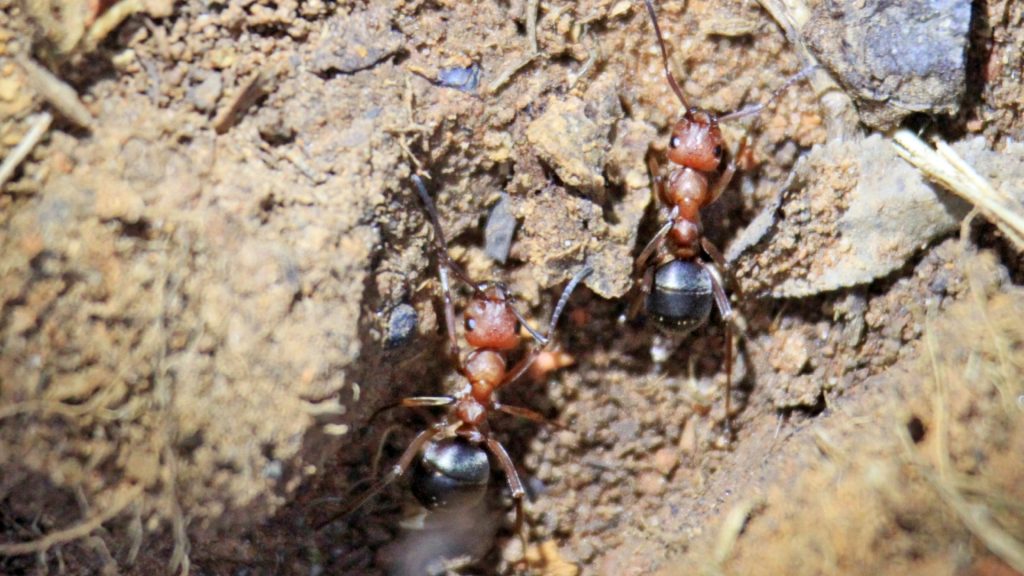
Diatomaceous earth is excellent for killing ants. Since it is a powder, you can use it in the tiny crevices that ants use to get indoors, or you can dust it into an anthill to kill the whole colony.
Once you sprinkle diatomaceous earth on an anthill, you should see results within a day or two: it may take a bit longer if the anthill is located in a damp area.
Does Diatomaceous Earth Kill Fleas?
Diatomaceous earth kills fleas, and it is perfect for killing flea eggs and larvae since fleas are unable to jump in their immature states.
But while diatomaceous earth can be part of a flea control program, it is not sufficient in itself to handle a big flea infestation. Consult a pest control professional if your home has serious flea issues.
Related: How To Kill Fleas? Best Flea Killers
Does Diatomaceous Earth Kill Bed Bugs?
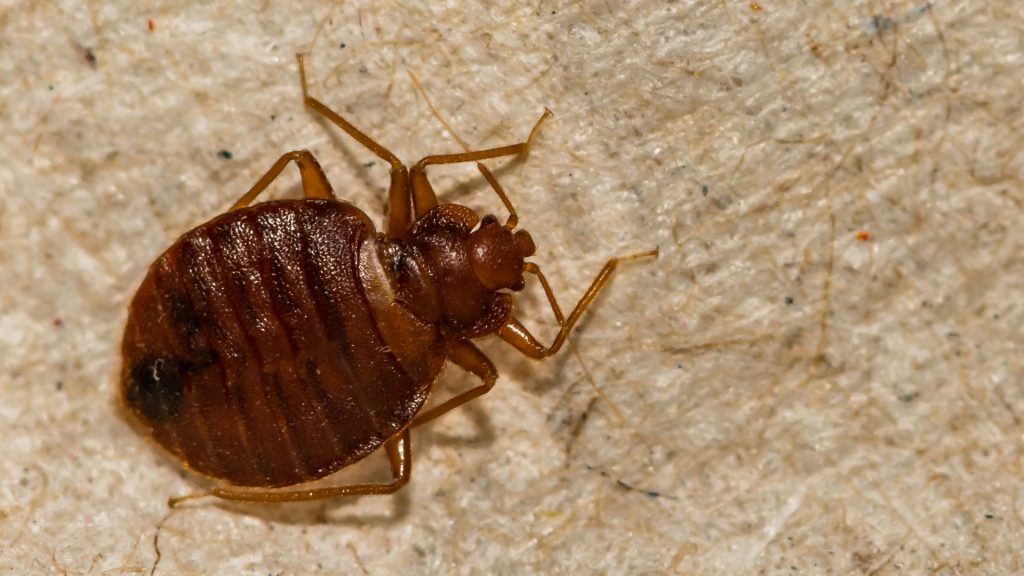
Diatomaceous earth is one of the best bed bug killers since it is safe enough to use on a mattress. Just sprinkle it on your mattress and leave it undisturbed for 12 hours to kill bed bugs. Then, vacuum off the powder.
You may need to repeat this process every few days to eliminate the bed bugs entirely.
Related: How to Use Diatomaceous Earth for Bed Bugs: Tips and Guide
Does Diatomaceous Earth Kill Spiders?
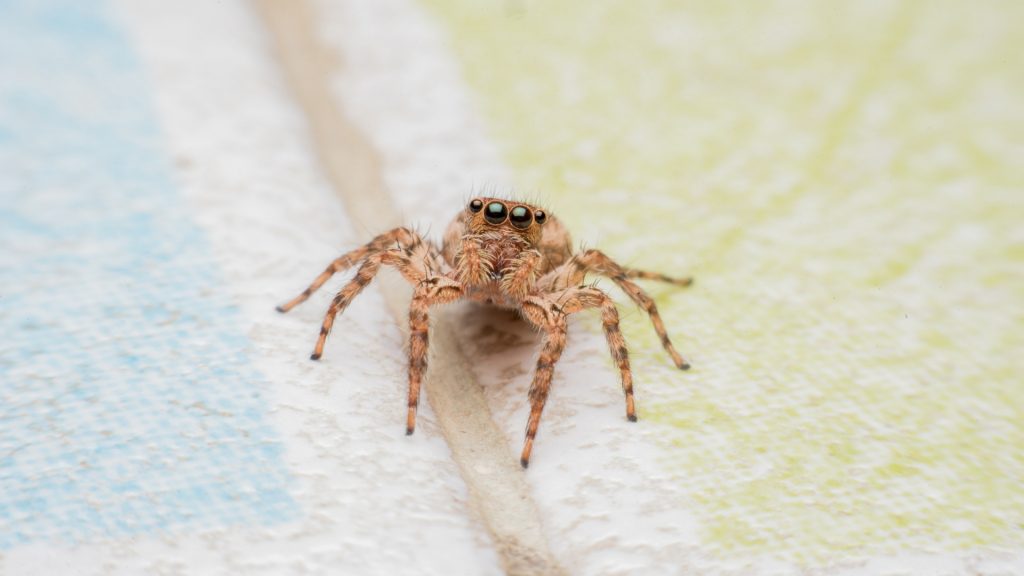
Diatomaceous earth kills spiders and immature spiders. Sometimes it may be challenging to treat the areas where spiders weave their webs, but you can use a wet-spray method to apply diatomaceous earth to windowsills, walls, trees, and corners.
To wet-spray:
Step1: In a clean spray bottle, mix two tablespoons of diatomaceous earth with one cup of water.
Step 2: Wear a mask and eye protection to keep the pesticide from irritating your eyes or respiratory system.
Step 3: Spray hard-to-reach areas or directly on spiders to kill them.
Related: Outdoor Spider Control: 7 Best Outdoor Spider Sprays Review
Does Diatomaceous Earth Kill Ticks?
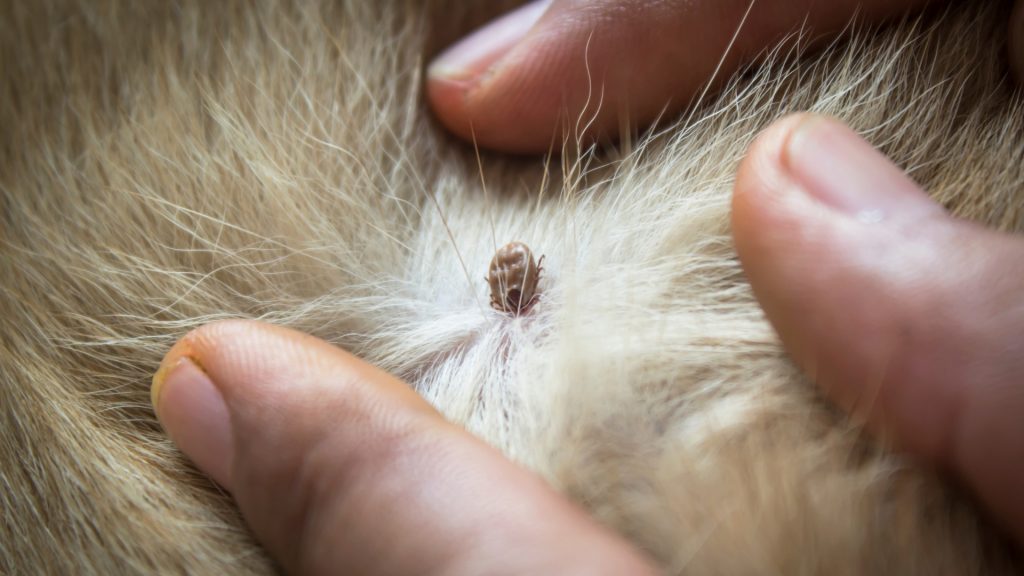
Diatomaceous earth is one of the best ways to eliminate and repel hard-to-kill ticks. Since ticks have a thick cuticle and a durable, waxy outer coating, it can be challenging to eradicate them. Still, diatomaceous earth is one of the only non-chemical pesticides that work against them.
You can spray diatomaceous earth around trees in your yard, use it directly on your pet’s skin, treat your hair with it, or leave it around doorways and windows to get rid of ticks.
Related: How To Get Rid of Ticks in Yard
Does Diatomaceous Earth Kill Mites?
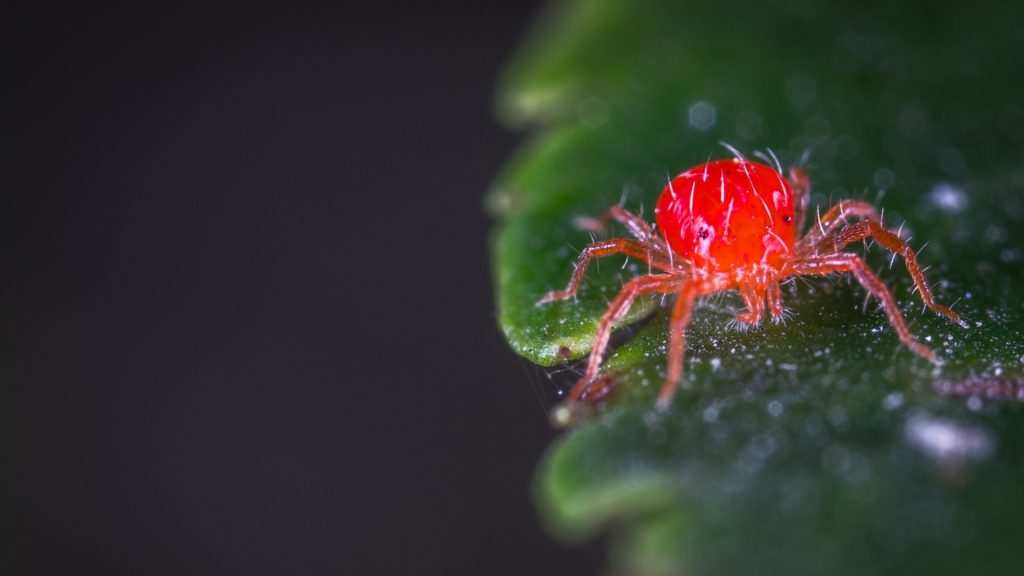
Diatomaceous earth quickly kills mites of all kinds. You can use it to kill dust mites, mites living on animals, and any other type of mites. You can apply diatomaceous earth to bedsheets to treat scabies mites and, if you keep chickens, diatomaceous earth is a safe way of dealing with chicken mite and chicken lice infestations in your flock.
Does Diatomaceous Earth Kill Termites?
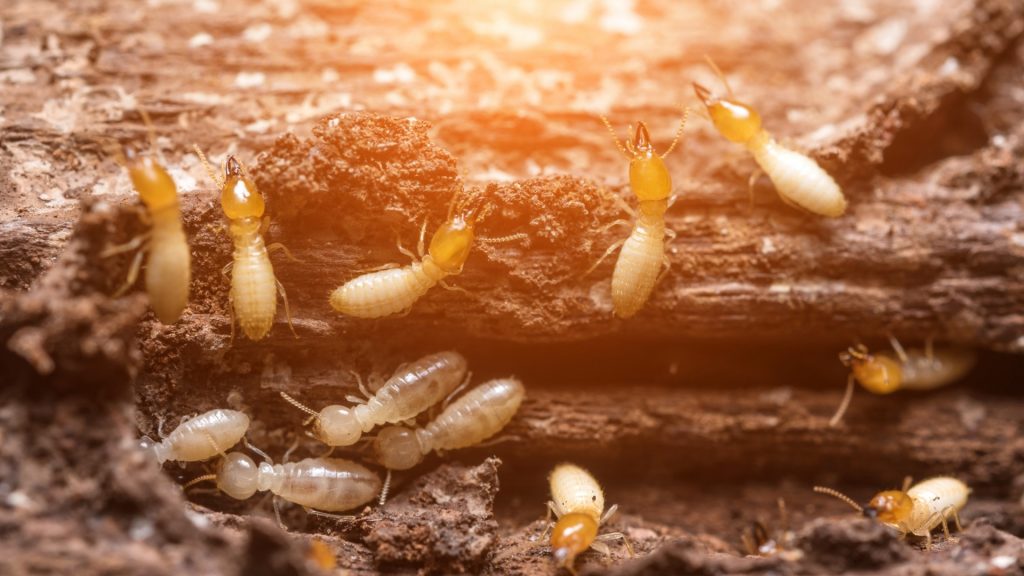
Diatomaceous earth is excellent for killing termites since you can coat wood and boring holes with a fine dust of insecticidal powder. To kill termites, cover the carpets, crevices in your home, and termite-infested areas of your home or yard every three days to eliminate them.
Does Diatomaceous Earth Kill Lice?
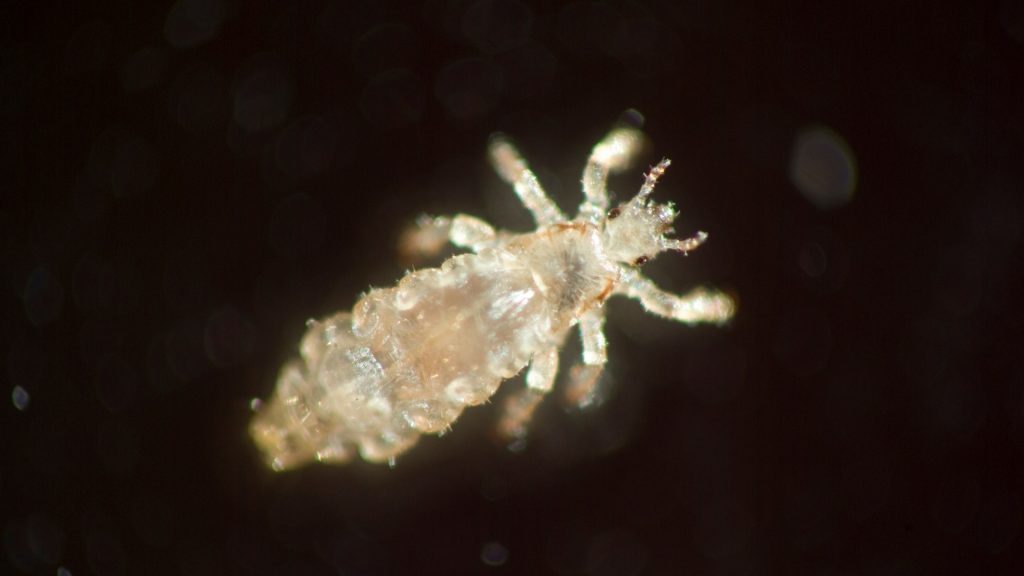
Diatomaceous earth kills lice, but you must be careful not to inhale the dust when you apply it directly to your hair.
To treat lice with diatomaceous earth:
Step 1: Wear a mask and eye protection.
Step 2: Coat the roots of your hair with diatomaceous earth.
Step 3: Cover your hair with a shower cap or tie a t-shirt around it.
Step 4: Leave the powder on your hair overnight.
Step 5: Thoroughly wash and comb your hair with a fine-toothed comb.
Does Diatomaceous Earth Kill Centipedes?
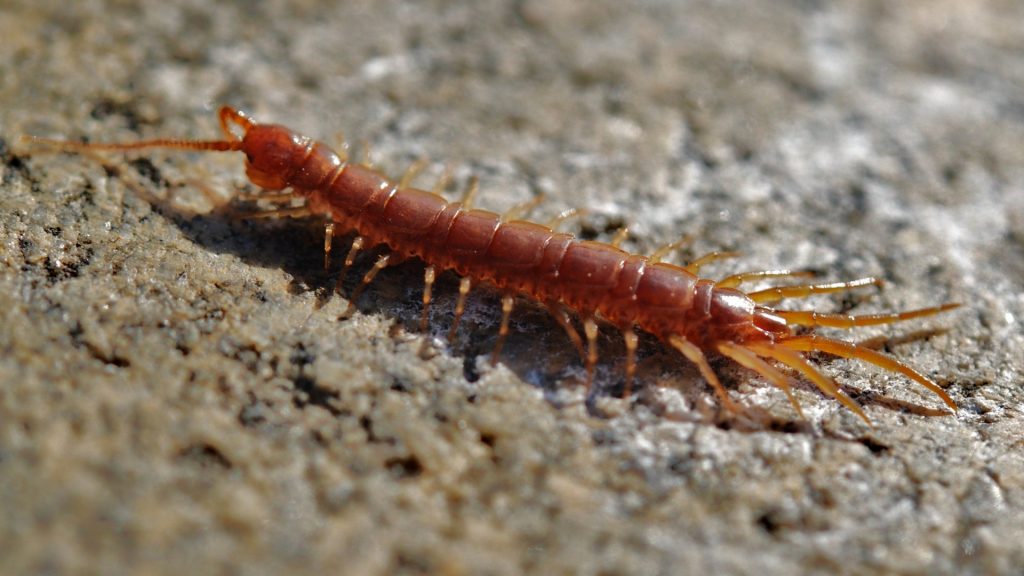
Diatomaceous earth quickly kills centipedes. Just treat floors or outdoor areas with diatomaceous earth and watch them die.
If you are dealing with centipedes in your basement, sprinkle some diatomaceous earth on the space between the stairs and the wall to get rid of centipedes as they crawl out of damp crevices.
Other Insects and Animals That You Can Repel With Diatomaceous Earth
Diatomaceous earth will kill almost any insect, including:
- Silverfish
- Slugs and Snails
- Aphids
- Grasshoppers
- Carpet Beetles
- Earwigs
- All types of larvae
- Mosquitoes
- Crickets
- Beetles
- Scorpions
- Ground wasps
Diatomaceous earth also repels mice, rats, squirrels, chipmunks, and other rodents without killing them.
To humanely repel rodents, mix a tablespoon of diatomaceous earth with a few drops of lemon or peppermint essential oil and use a spoon to put it near rodent holes or any other areas rodents seem to frequent.
The smell will repel them and encourage them to go somewhere else.
Is Diatomaceous Earth Safe for Pets?
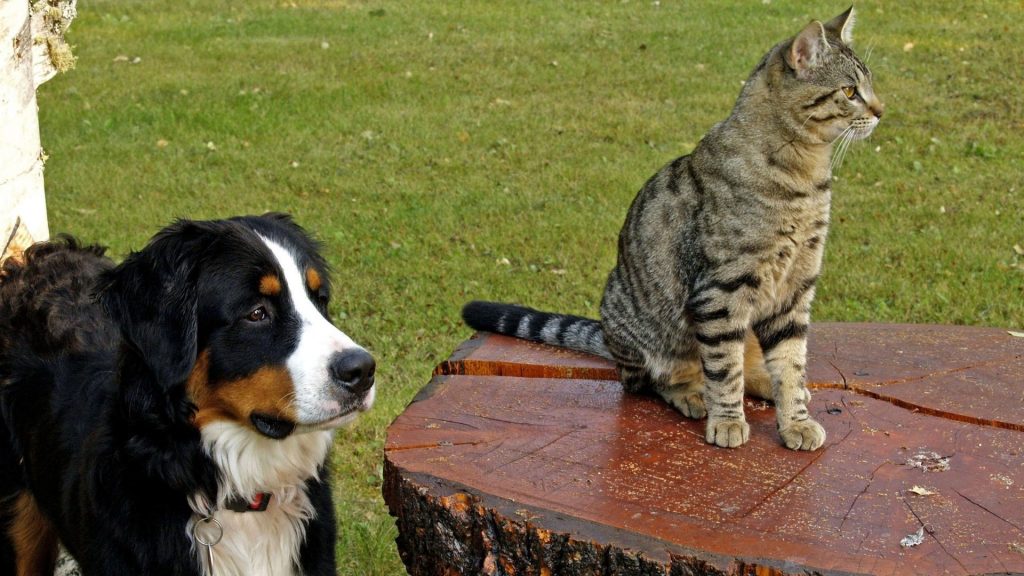
If your dog or cat has fleas, don’t reach for a potentially cancer-causing chemical insect killer. Instead, try diatomaceous earth, which will kill bugs without posing a health risk to your beloved pets.
Diatomaceous may be a potent insecticide, but it is entirely safe for pets. It is healthy to eat and non-toxic, so you can even use it on self-grooming cats and dogs.
So, let’s go over how you can use diatomaceous earth to kill fleas and ticks on your dog and cat.
Is Diatomaceous Earth Safe for Dogs?
Diatomaceous earth is safe for dogs as long as you are careful not to let your pet breathe in the diatomaceous earth and keep it out of their eyes since it is an abrasive substance that can irritate internal organs.
How To Use Diatomaceous Earth for Fleas on Dogs?

To treat your dog for fleas and ticks, you will need:
- Food-grade diatomaceous earth
- Safety gear such as gloves, a mask, and eye protection
- A towel or rag
- A comb or brush
- A mask, eye protection, and gloves
To kill pests on your dog:
Step 1: Take your dog and all of your equipment outside.
Step 2: Put on your mask, gloves, and eye protection.
Step 3: Slowly and directly apply the diatomaceous earth to your dog’s body, minimizing the amount of powder that gets in the air.
Step 4: When you apply from the shoulder to the ears, cover your dog’s face lightly with the towel to keep the powder out of their eyes and nose.
Step 5: Brush or comb the powder through your dog’s coat, brushing out the excess powder.
Step 6: In 12 hours, bathe your dog to minimize their exposure to the diatomaceous earth.
Is Diatomaceous Earth Safe for Cats?
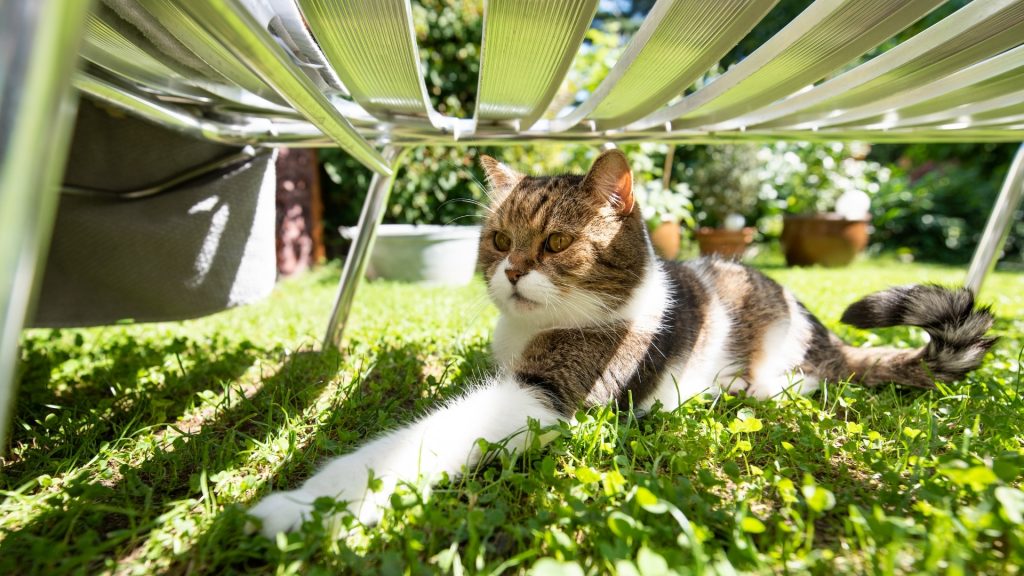
As is the case for dogs, diatomaceous earth is perfectly safe for cats. Even if they eat it while they groom themselves, there is no immediate health risk unless they inhale the powder. Many cat owners even add small quantities of diatomaceous earth to their cat’s food as a calcium and mineral supplement.
How To Use Diatomaceous Earth for Fleas on Cats?
If you want to apply diatomaceous to your cat’s skin for fleas, you will need:
- A towel
- A brush with dense, soft bristles
- Food-grade diatomaceous earth
- Safety gear such as a mask, eye protection, and gloves
To treat your cat for fleas and ticks:
Step 1: Put on your safety gear.
Step 2: Gently cover your cat’s face with a towel to minimize eye and respiratory system irritation.
Step 3: Apply the diatomaceous earth in small pinches directly to your cat’s skin and not on its hair.
Step 4: Starting from the skin, brush your cat’s hair to get excess diatomaceous earth off of them, leaving only tiny traces on its skin.
Step 5: Brush your cat every day to minimize chances of eye, nose, or mouth irritation.
Another great tip is to put a bit of diatomaceous earth in your cat’s litter box. It will minimize odors while killing fleas, ticks, flies, mites, and other insects.
Where To Buy Diatomaceous Earth?
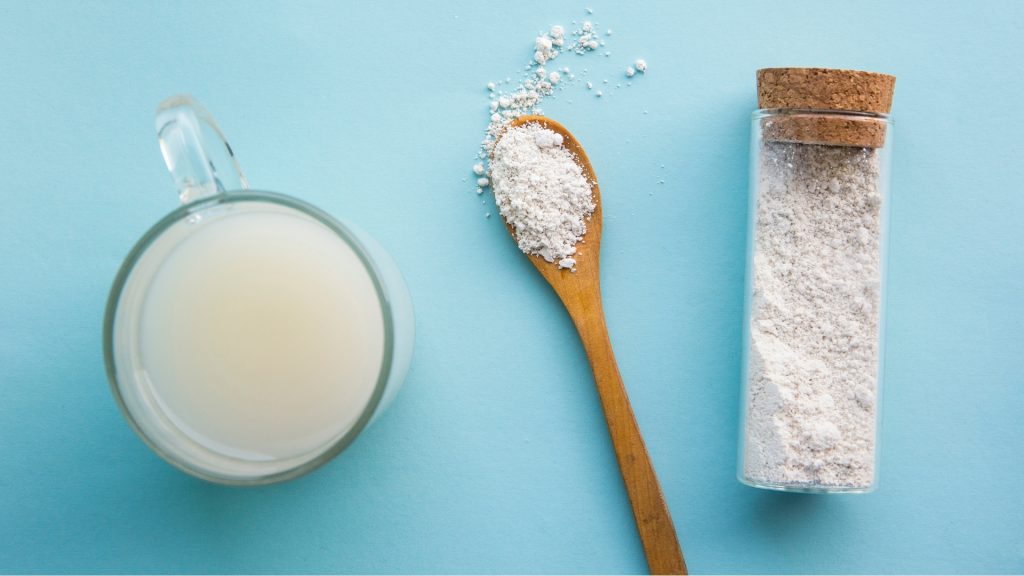
So, now that you know how wonderful diatomaceous earth is for repelling and killing bothersome pests, you might be wondering where you can get some.
You can get diatomaceous earth at any hardware store, gardening center, or online. When using in an area with small children and pets, be sure to buy the food-grade kind, so you know it’s completely safe.
There are many diatomaceous earth products on the market, which makes deciding on one of them challenging. This article puts together a list of some of the most widely available and effective food-grade diatomaceous earth products on the market.
Best Diatomaceous Earth Reviews
Overall, experts and pest control pros recommend:
1. Diatomaceous Earth DE10 Organic Food Grade Diatomaceous Earth
- Natural Product 100% Chemical-Free: Made from 10lbs of food-grade...
- OMRI Listed for Organic Use: Certified by the Organic Materials...
- Diatomaceous Earth is a natural source of freshwater amorphous...
- Vegan-Keto-Gluten Free
- Trusted Brand with the highest purity standard for our...
This is 100% organic and comes from natural freshwater sources, so this is safe to use in your kitchen, bedroom, and around your vegetable garden. It is made for human consumption, so you know that using it for pest control keeps you and your pets safe.
2. Harris Food-Grade Diatomaceous Earth
- Natural Product - Composed of 4lbs of 100% ground freshwater...
- OMRI Listed - Listed with the Organic Minerals Research...
- Powder Duster Included - Powder duster in the bag for easy and...
- Supports a Great Cause - Harris donates a portion of profits to...
- Made in the USA – Mined in Nevada and packaged in Georgia
This diatomaceous earth is food-grade, but it is made explicitly for pest control use. It comes with a free duster for applying the powder around your home, and 10% of the proceeds from this product go to the Etowah Valley Humane Society.
Summary
Diatomaceous earth kills and repels hundreds of pests, making it essential for anyone who wants to keep bugs at bay. It is safe enough to use in your kitchen, on your mattress, and on your skin, so you will never have to use a hazardous chemical to control insect invaders again.
List of Sources
Sung, Y. L., Yu, H. C., Hui, R. J., Cheng, D. C. (2019). A National Drinking Water Clearinghouse Fact Sheet: Effects of Diatomaceous Earth on House Dust Mite Sensitization in BALB/c Mice. Journal of Arthropod-Borne Diseases.
Hoover, R. (1979). Those Marvelous, Myriad Diatoms. National Geographic.
Watson, W., Luginbuhl, J. M. (2015). Lice: What They Are and How to Control Them. NC State Extension.
Division of Environmental Health. (2019). Low Danger Pest Control Booklet for Communities. University of Cape Town.
Bunch, T. R., Bond, C., Buhl, K., Stone, D. (2013). Diatomaceous Earth General Fact Sheet. National Pesticide Information Center, Oregon State University Extension Services.
- How to Get Rid of Turtles | Proven Long-Term Solutions! - August 26, 2023
- How to Get Rid of Kingsnakes | Easy & Humane! - August 26, 2023
- How to Get Rid of Northern Water Snakes | Best Solutions and Preventative Measures! - August 19, 2023


